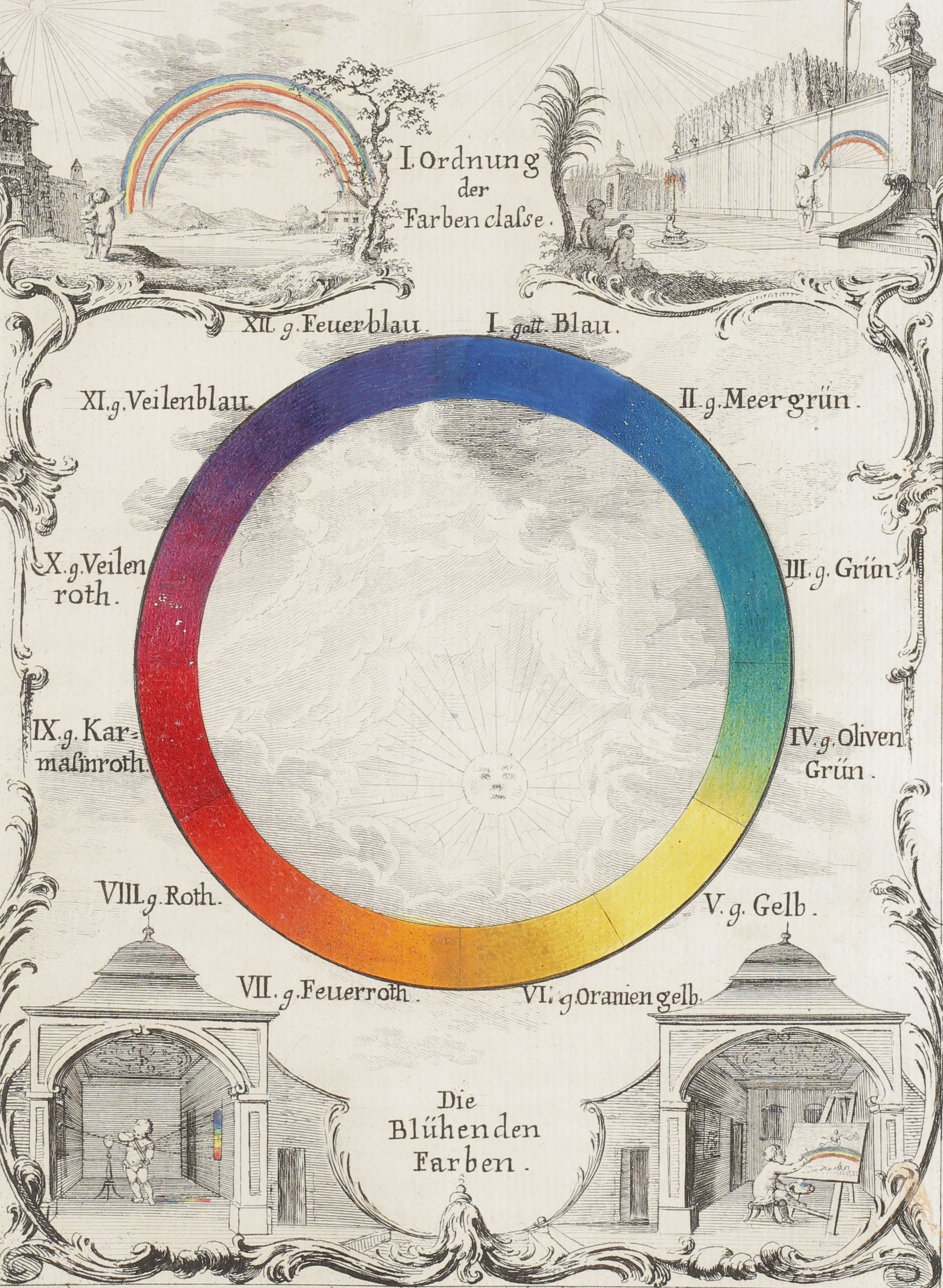Ringvorlesungen
Farbe. Eine Kunst- und Wissensgeschichte
Ringvorlesung des Kunstgeschichtlichen Instituts der Goethe-Universität Frankfurt am Main
Dienstags 18:00-20:00
Campus Westend, Theodor-Adorno-Platz 1, 60323 Frankfurt am Main, Hörsaalzentrum HZ 3
Organisiert von Prof.'in Dr. Mechthild Fend Dr. Mechthild Fend und Dr. Ulrike Kern

Die Vorlesungsreihe stellt die Frage nach dem Verhältnis zwischen der Kunstgeschichte und der Wissens- und Industriegeschichte der Farbe. Von besonderem Interesse ist dabei die Farbproduktion in der ehemaligen IG Farben (im Volksmund auch ‚Rotfabrik' genannt), in deren Verwaltungsgebäude heute Teile der Goethe-Universität untergebracht sind. Die Höchst-AG spezialisierte sich auf die Entwicklung und Herstellung synthetischer Farben und produzierte als erste chemische Fabrik künstliches Indigo. Die Ringvorlesung knüpft an die jüngste Forschung an, die sich neben der sich wandelnden Semantik der Farbe verstärkt auch dem historischen Farbwissen sowie der materiellen Kultur von Pigmenten und natürlichen wie synthetischen Färbemitteln zugewandt hat. Außerdem fragt die Vorlesungsreihe nach dem Verhältnis von Körper und Farbe, insbesondere der Verschränkung von künstlerischem und naturgeschichtlichem Wissen von der Hautfarbe.
| 26.04.2022 | Esther Leslie, Birkbeck College London Red Green Blue: IG Farben's Chemical Colours and the Contamination of Everything | ||
| 3.05.2022 | Giulia Simonini und Friedrich Steinle, TU Berlin Farbtheorien des 18. Jahrhunderts und die Grundfarbe Rot in der Dreifarbenlehre | ||
| 10.05.2022 | Ad Stijnman, Amsterdam Wahre Farben: Jacob Christoff Le Blon und Jan L'Admiral – technische Aspekte des Dreifarbendrucks | ||
| 24.05.2022 | Melissa Hyde, University of Florida, Gainesville Men in Pink | ||
| 31.05.2022 | Karin Leonhard, Universität Konstanz Die Erweiterung der Palette. Künstler im Labor 1580-1680 | ||
| 14.06.2022 | Kirsty Sinclair Dootson, University of St Andrews Skin, Colour, and Sensitivity: The Racial Histories of Chromatic Cinema | ||
| 28.06.2022 | Carole Biggam, University of Glasgow Blue in Early English: A Most Elusive Concept | ||
| 12.07.2022 | Ben Pollitt, The Courtauld Institute, London Colour, Climate, Weather (1770-1870) |

- Aktuelles und Presse
- Pressemitteilungen
- Öffentliche Veranstaltungen
- Uni-Publikationen
- Aktuelles Jahrbuch
- UniReport
- Forschung Frankfurt
- Aktuelle Stellenangebote
- Frankfurter Kinder-Uni
- Internationales
- Outgoings
- Erasmus / LLP
- Goethe Welcome Centre (GWC)
- Refugees / Geflüchtete
- Erasmus +
- Sprachenzentrum oder Fremdsprachen
- Goethe Research Academy for Early Career Researchers
- Forschung
- Research Support
- Forschungsprojekte, Kooperationen, Infrastruktur
- Profilbereich Molecular & Translational Medicine
- Profilbereich Structure & Dynamics of Life
- Profilbereich Space, Time & Matter
- Profilbereich Sustainability & Biodiversity
- Profilbereich Orders & Transformations
- Profilbereich Universality & Diversity





